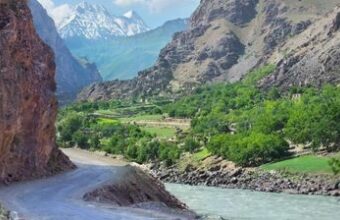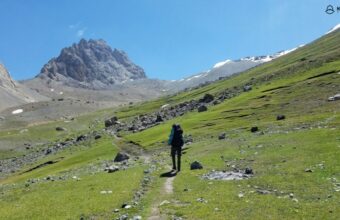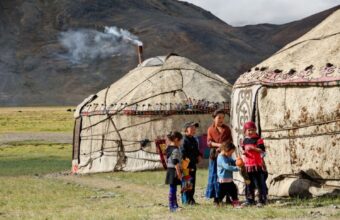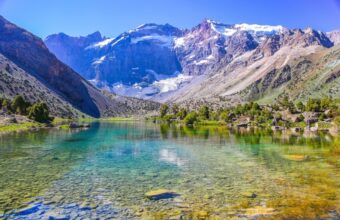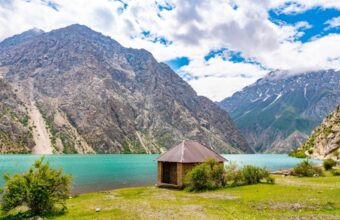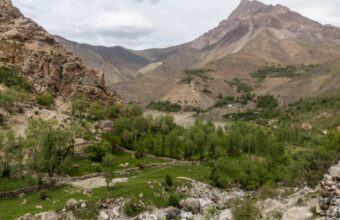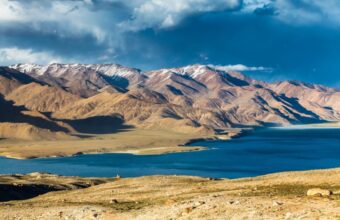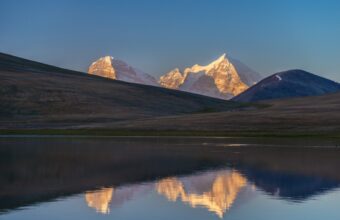Trekking in Tajikistan
An expert guide to the best treks and hikes in Tajikistan
Tajikistan is one of the most spectacular trekking destinations you've never heard about.
Hidden in the mountainous cul-de-sac of Central Asia, bordered by China, Afghanistan, Kyrgyzstan and Uzbekistan, it's the 'Stan that is most beloved by adventure travel nuts like me.
I've been travelling and trekking in Tajikistan for 25 years as a travel journalist and guidebook author. The first time I trekked here I headed to the Fann Mountains, the country’s most popular trekking area. The terrain is tough but beautiful, full of granite walls, turquoise mountain lakes and valleys linked by craggy passes.
Next up was the Pamirs, a schizophrenic range of wild, deep valleys and jagged peaks in the western range, and high-altitude, rolling open valleys dotted with Kyrgyz yurts in the east. To the south is the stunningly beautiful Wakhan Valley, probably my favourite part of the country, which looks into Afghanistan and the high wall of the Hindu Kush range beyond.
The thing that all these regions have in common is a lack of trekking infrastructure. Marked routes, guides, accommodation, transportation and even food are scarce. You need to be hardy and self-sufficient, or go with a good trekking operator who can provide the logistical help you really need.
Trekking in Tajikistan is wild, but if you fancy some real adventure the options are limitless.
Where to go trekking in Tajikistan
Our author's favourite trekking locations
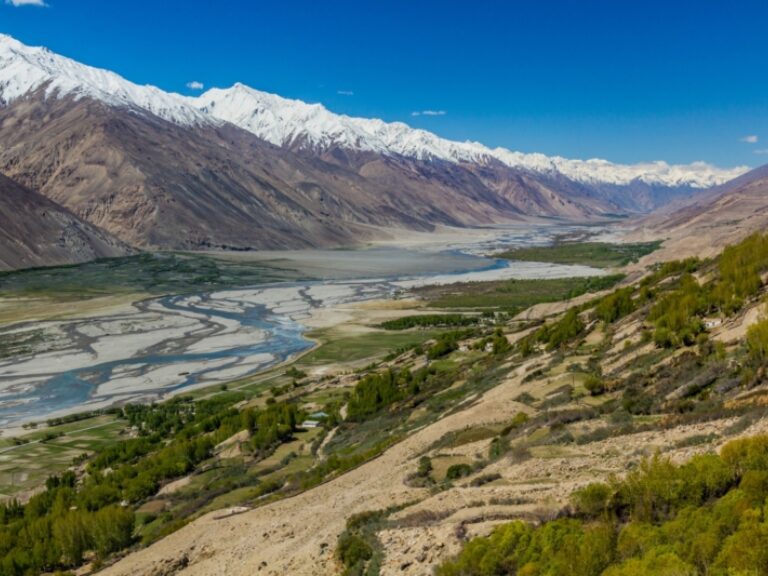
Tajikistan
Wakhan Valley
The Wakhan Valley is probably my favourite place to trek in Tajikistan. Sandwiched between the Pamirs and the Afghan border, it’s a stark landscape with rugged hiking and plenty of glimpses into traditional Pamiri life.

Tajikistan
Zeravshan Range
The Zeravshan range is another personal favourite. I love the jagged khaki-coloured valleys and villages here, and there's a real feeling of remoteness but with a good selection of homestays.

Tajikistan
Pamir Mountains
The wild Pamirs in southern Tajikistan are well off the mainstream tourist trail but increasingly served by specialist trekking operators. The new Pamir Trail is in development and the Pamir Highway is truly epic.

Tajikistan
Fann Mountains
The Fann Mountains are relatively accessible and close to some of Tajikistan’s best known natural landmarks; Iskanderkul and the Seven Lakes.
The best treks in Tajikistan
Some popular, and lesser-known, trekking routes
-
Tajikistan
View trips -
Fann Mountains
View trips -
Fann Mountains
View trips -
Yagnob Valley
-
Pamir Mountains
-
Jizev
-
Pamir Mountains
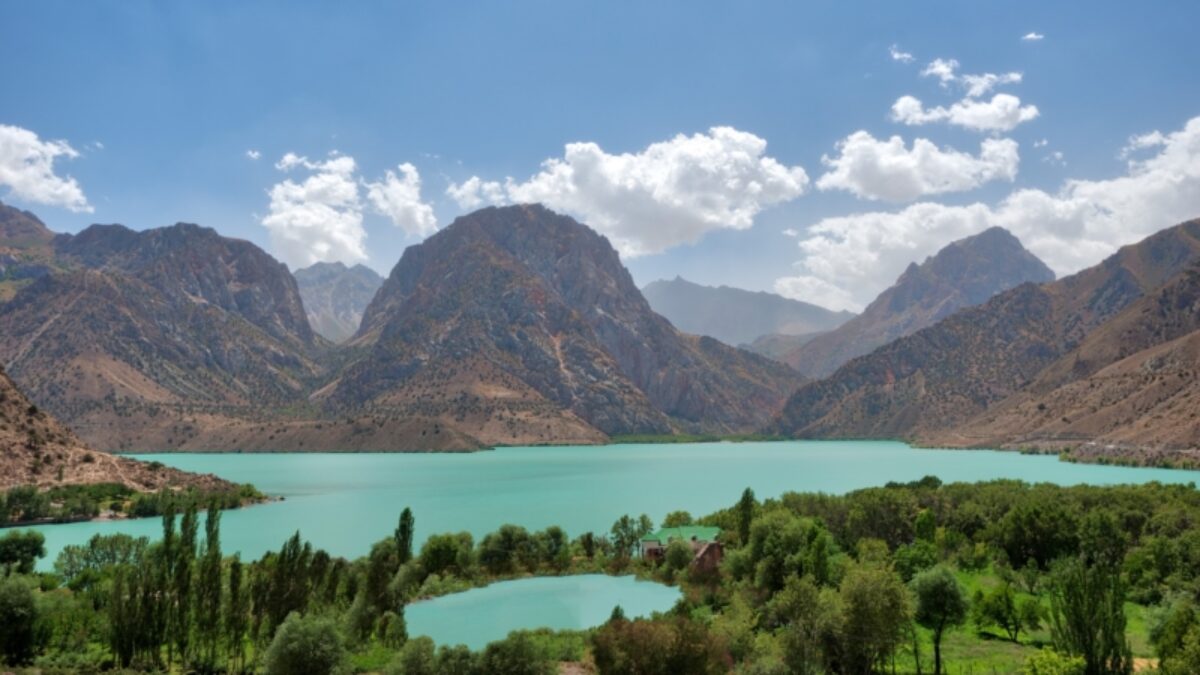
The iconic Iskanderkul, in Tajikistan's Fann Mountains
Planning a trek in Tajikistan
Everything you wish you'd known before you booked
Solo vs trekking tours
Experienced trekkers can go it alone in most of Tajikistan, but the terrain, lack of transport, unmarked trails and language barriers all make solo trekking here very tough going. Aside from the nascent Pamir Trail, there are no ‘official’ long distance routes and not even much in the way of reliable maps.
Therefore, most people visit on an organised trekking tour, escorted by a guide and supported by porters and vehicles with full camping gear.
Foreign trekking companies only offer a limited number of trekking routes, mostly in the relatively accessible Fann Mountains, but a couple of specialised agencies offer treks to the Pamir and other regions.
Don't miss the historical add-ons
If you are trekking in the Fann Mountains I’d strongly recommend you combine your trip with a visit to Samarkand, just across the border in Uzbekistan. If, like me, you’re interested in Central Asia's epic history then you’ll also want to visit the archaeological site of Penjikent, a 1500-year-old Silk Road city near the starting point of many routes into the Fanns.
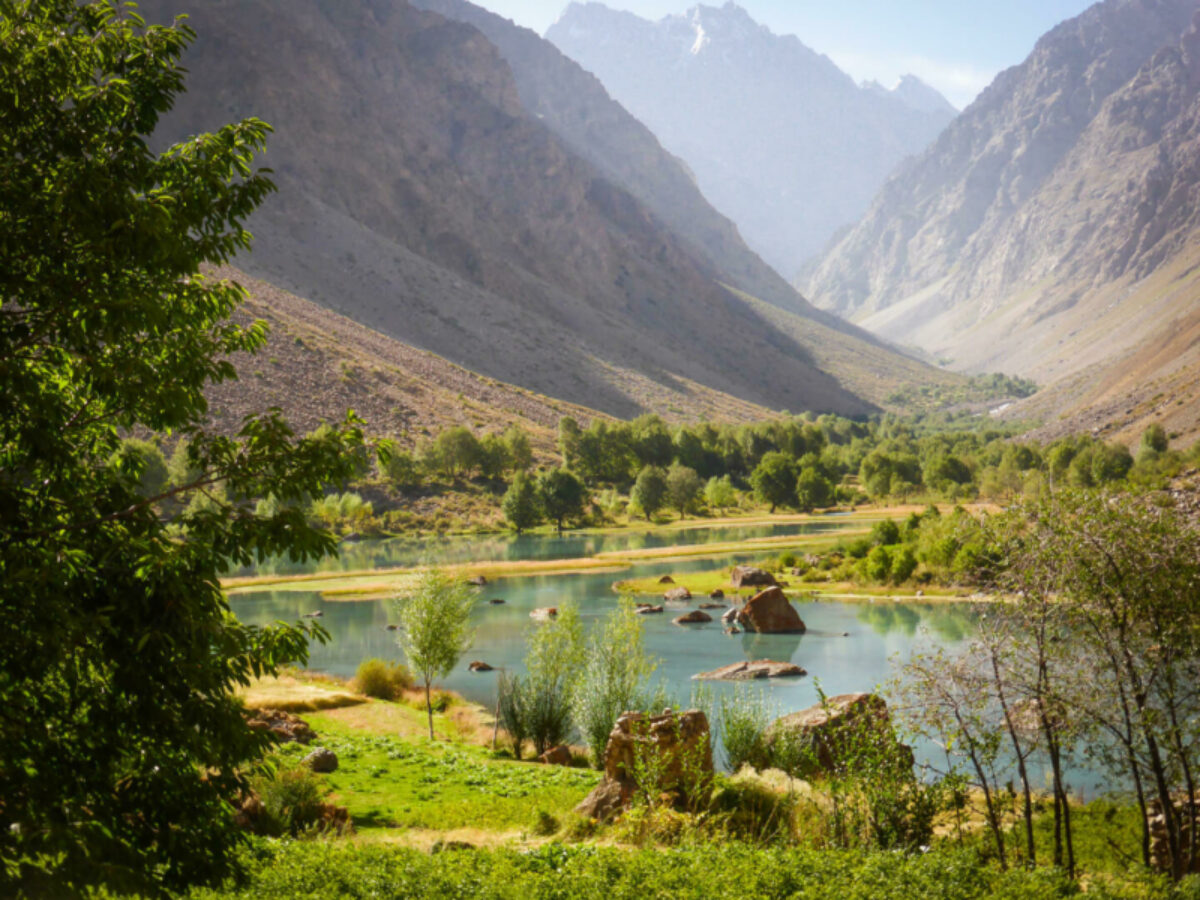
Stunning scenery in Tajikistan's Jizev Valley
Tajikistan trekking FAQs
Your questions, our expert answers
Question
When is the best time to go trekking in Tajikistan?
Answer
July, August and September are the only practical months for trekking here, when the snows have melted and temperatures are comfortable at high altitudes.
Be prepared for some serious heat in lowland Tajikistan in July and August. Temperatures of 40°C are not uncommon in Dushanbe and Penjikent in the summer trekking season, when the mountains are a cool retreat.
Question
How challenging is trekking in Tajikistan?
Answer
I’d say it’s fine for older trekkers who are fit and active but it’s no walk in the park. The terrain is rugged and the sun can be very strong. Most treks are above the tree line with little shade. Beyond this, the trekking experience here has few creature comforts: expect rough roads, rustic homestays and unvaried food.
Supported trekking with a guide, porters, pack animals or vehicles solves a lot of problems, but doesn’t make the trails any easier!
Question
Can you trek in Tajikistan solo or without a guide?
Answer
Experienced trekkers can find enough information and maps to trek independently in the Fann Mountains without a guide. You should definitely have a guide in the remoter parts of the Zeravshan range and the wild Pamir valleys.
Question
What sort of accommodations are there? Can we stay with locals in yurts?
Answer
Organised trekking tours will use a combination of camping (equipment provided) and very basic homestays. Yurt stays are a highlight of trekking in the eastern Pamirs. The valleys of the western Pamir have excellent homestays linked to community-based tourism projects, which I highly recommend.
Be sure to get the latest information on homestays in your trekking region. You won't find them on the trekking trails themselves but they are often at the start and end points of treks and they are always good places to stay and find a local guide. I often arrange my entire itinerary around the availability of homestays, especially when I'm hiking without a tent.
Question
What kind of food should I expect on a trek in Tajikistan?
Answer
On organised treks and in homestays you’ll be well fed. Hearty laghman (noodle stew) and plov (pilau rice) are common staples.
Expect instant noodles and mashed potatoes if trekking independently. Naan bread, dried fruit and nuts, canned fish and Russian salami are my go-to local trekking snacks.
Question
Is trekking in Tajikistan safe? How about for solo female travellers?
Answer
The main dangers are the hazards inherent to trekking in a very remote, very wild landscape. You won’t be able to rely on emergency evacuation or even reliable mobile signal. Check your trekking operator has satellite phones or EPIRB beacons for emergencies and don’t even think about trekking in Tajikistan without comprehensive insurance that covers international evacuation.
In terms of personal safety and security there have been isolated incidents of terrorism in the past but things are fairly stable now. I'd advise against anyone regardless of gender trekking alone in Tajikistan.
Question
Is altitude sickness a problem while trekking in Tajikistan?
Answer
Altitude sickness isn’t a major problem in the Fann Mountains but can be an issue in the eastern Pamirs, where starting elevations are around 3,500m and climb to 4,500m.
Question
What are the hardest and easiest treks in Tajikistan?
Answer
The treks leading from the Bartang Valley to Sarez Lake and the Pamir plateau are remote, tough and spectacular. Shorter treks in the Fann Mountains and Jizeu Valley are the easiest places to start.
Question
What permits are required to trek in Tajikistan?
Answer
Gorno-Badakhshan (GBAO) permits are required for all travel in the eastern Pamir. Tajik National Park technically levies a daily park fee, if you actually see a ranger. You need a special permit to visit Lake Sarez in the remote western Pamir.
Question
Can you do horse back trekking in Tajikistan?
Answer
Horse treks are possible on some routes in the Fann Mountains and in the central Pamirs, notably from Bachor to the stunning lakes of Zarosh Kul and Chapdara Kul. Camel trekking is possible from Murghab in the eastern Pamirs.
Question
What trekking gear can I rent in Tajikistan?
Answer
If you’re trekking solo, gas canisters are available in Dushanbe, and should be available in Penjikent and Khorog. Otherwise you are betting off bringing all other gear with you.
If you’re trekking with an organised tour operator they’ll supply all necessary equipment other than sleeping bags which may be available to rent.

